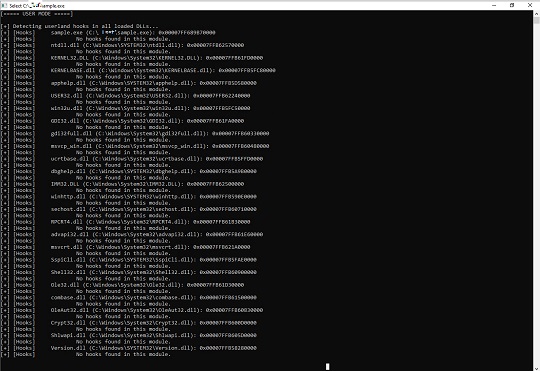HackTool.Win64.EDRSandBlast.D
Trojan.Win64.Hacktool (IKARUS)
Windows

Type de grayware:
Hacking Tool
Destructif:
Non
Chiffrement:
Non
In the wild::
Oui
Détails techniques
Installation
Fügt die folgenden Prozesse hinzu:
- {Grayware File Path}\{Grayware File Name}.exe
Einschleusungsroutine
Schleust die folgenden Dateien ein:
- {Grayware File Path}\Ntoskrnl.pdb → deleted afterwards
- {Grayware File Path}\fltMgr.pdb → deleted afterwards
- {Grayware File Path}\wdigest.pdb → deleted afterwards
- {Grayware File Path}\WNBIOS.sys → vulnerable driver
Andere Details
Es macht Folgendes:
- It employs techniques utilized to bypass EDR detections both in user and kernel mode.
- It performs the following actions to bypass EDR detections:
- Kernel Notify Routines Callbacks Removal → by exploiting an arbitrary kernel memory read/write primitive through exploiting a vulnerable driver
- Object Callbacks Removal → by disabling the Enabled flag in the OB_CALLBACK_ENTRY structure, unlinking the CallbackList of threads and process, or disabling object callbacks through disabling the SupportsObjectCallbacks bit in the ObjectTypeFlags field
- Minifilters' Callbacks Unlinking → by scanning structures used by the Windows Filter Manager to detect callback nodes containing monitoring functions and unlink them from their lists, making them temporarily invisible from the filter manager
- Disable ETW Microsoft-Windows-Threat-Intelligence Provider → by patching in kernel memory during runtime the ETW TI provider
- Userland Hooking Bypass → by either removing the hooks, using a custom or the existing EDR's trampoline to jump over and execute the rest of the function as is, using a duplicate DLL, or using direct syscall methods
- It detects EDR drivers and processes.
- It bypasses RunAsPPL by elevating its protection level higher than the LSASS process.
- It bypasses Credential Guard by enabling Wdigest to store cleartext credentials in LSASS memory.
- It downloads symbols from the Microsoft Symbol Server for the ntoskrnl.exe, fltmgr.sys, and wdigest.dll. If a corresponding *Offsets.csv file exists, it appends the acquired offsets from the symbols to the file.
- It connects to the following URL(s) to download symbols from the Microsoft Symbol Server:
- https://{BLOCKED}icrosoft.com/download/symbols/ntkrnlmp.pdb/2E37F962D699492CAAF3F9F4E9770B1D2/ntkrnlmp.pdb
- https://{BLOCKED}crosoft.com/download/symbols/fltMgr.pdb/BDB830D5AD37A0994727A90DE1D97BA41/fltMgr.pdb
- https://{BLOCKED}crosoft.com/download/symbols/wdigest.pdb/D0FEB1356A4987BF32419D0533E05AED1/wdigest.pdb
- It checks for the presence of the following files:
- {Grayware File Path}\NtoskrnlOffsets.csv → contains offsets used to perform Offsets Retrieval
- {Grayware File Path}\FltmgrOffsets.csv → contains offsets used to perform Offsets Retrieval
- {Grayware File Path}\WdigestOffsets.csv → contains offsets used to perform Offsets Retrieval
- It conducts offset retrieval to perform kernel monitoring bypass operations.
- It checks for the existence of the following service:
- Service Name: {8 Random Characters}
- If the service above is not found, it is then created with the following details and started subsequently:
- Name: {8 Random Characters}
- Display Name: {8 Random Characters}
- Type: Driver service
- Start Type: Auto start
- Binary Path: {Grayware File Path}\WNBIOS.sys
- It reverses its routines and deletes the installed service when the command "exit" is entered on its console.
- It displays its logs on a console:

Solutions
Step 1
Für Windows ME und XP Benutzer: Stellen Sie vor einer Suche sicher, dass die Systemwiederherstellung deaktiviert ist, damit der gesamte Computer durchsucht werden kann.
Step 2
<p> Beachten Sie, dass nicht alle Dateien, Ordner, Registrierungsschlüssel und Einträge auf Ihrem Computer installiert sind, während diese Malware / Spyware / Grayware ausgeführt wird. Dies kann auf eine unvollständige Installation oder andere Betriebssystembedingungen zurückzuführen sein. Fahren Sie mit dem nächsten Schritt fort. </ p><p> Beachten Sie, dass nicht alle Dateien, Ordner, Registrierungsschlüssel und Einträge auf Ihrem Computer installiert sind, während diese Malware / Spyware / Grayware ausgeführt wird. Dies kann auf eine unvollständige Installation oder andere Betriebssystembedingungen zurückzuführen sein. Fahren Sie mit dem nächsten Schritt fort. </ p>
Step 3
Im abgesicherten Modus neu starten
Step 4
Diesen Registrierungsschlüssel löschen
Wichtig: Eine nicht ordnungsgemäße Bearbeitung der Windows Registrierung kann zu einer dauerhaften Fehlfunktion des Systems führen. Führen Sie diesen Schritt nur durch, wenn Sie mit der Vorgehensweise vertraut sind oder wenn Sie Ihren Systemadministrator um Unterstützung bitten können. Lesen Sie ansonsten zuerst diesen Microsoft Artikel, bevor Sie die Registrierung Ihres Computers ändern.
- In HKEY_LOCAL_MACHINE\SYSTEM\CurrentControlSet\services\{8 Random Characters}
Step 5
Diese Dateien suchen und löschen
- {Grayware File Path}\ntoskrnl.pdb
- {Grayware File Path}\fltMgr.pdb
- {Grayware File Path}\wdigest.pdb
- {Grayware File Path}\WNBIOS.sys
- {Grayware File Path}\NtoskrnlOffsets.csv
- {Grayware File Path}\FltmgrOffsets.csv
- {Grayware File Path}\WdigestOffsets.csv
- {Grayware File Path}\ntoskrnl.pdb
- {Grayware File Path}\fltMgr.pdb
- {Grayware File Path}\wdigest.pdb
- {Grayware File Path}\WNBIOS.sys
- {Grayware File Path}\NtoskrnlOffsets.csv
- {Grayware File Path}\FltmgrOffsets.csv
- {Grayware File Path}\WdigestOffsets.csv
Step 6
Führen Sie den Neustart im normalen Modus durch, und durchsuchen Sie Ihren Computer mit Ihrem Trend Micro Produkt nach Dateien, die als HackTool.Win64.EDRSandBlast.D entdeckt werden. Falls die entdeckten Dateien bereits von Ihrem Trend Micro Produkt gesäubert, gelöscht oder in Quarantäne verschoben wurden, sind keine weiteren Schritte erforderlich. Dateien in Quarantäne können einfach gelöscht werden. Auf dieser Knowledge-Base-Seite finden Sie weitere Informationen.
Participez à notre enquête!

